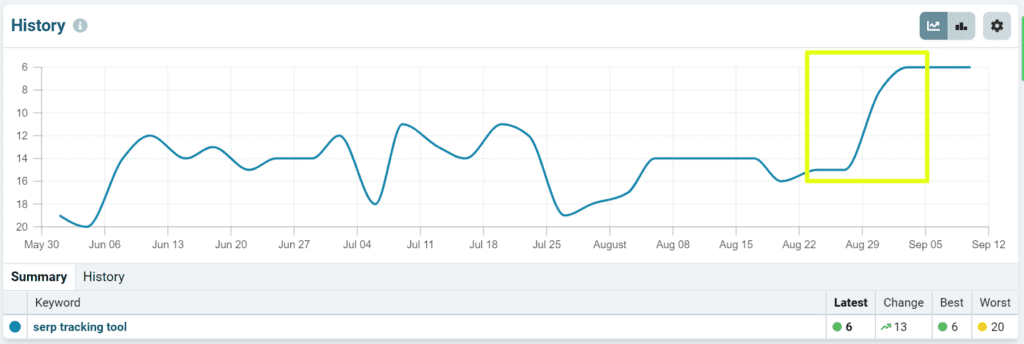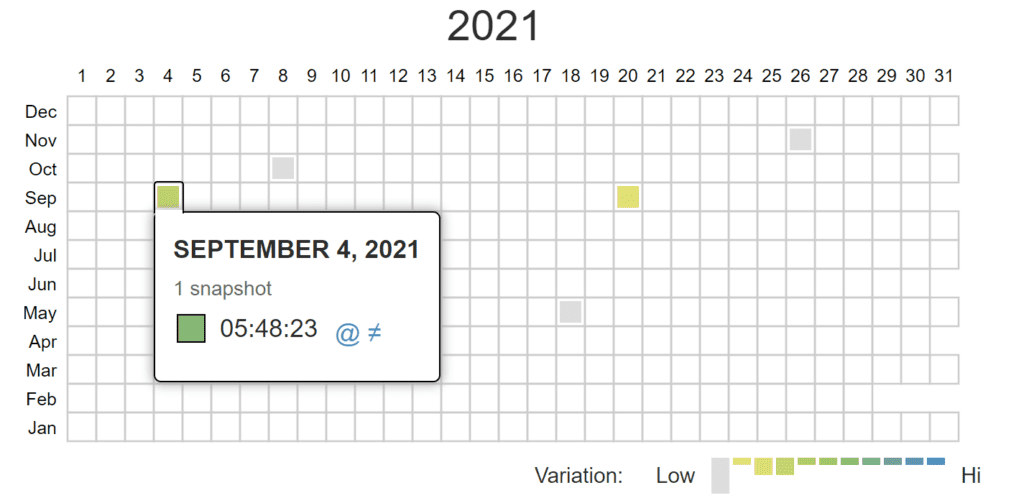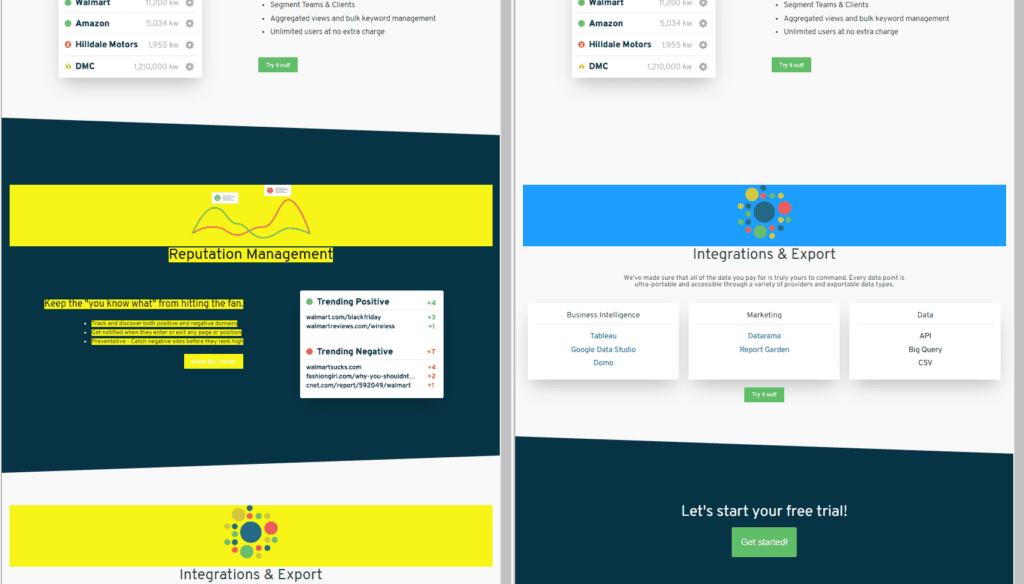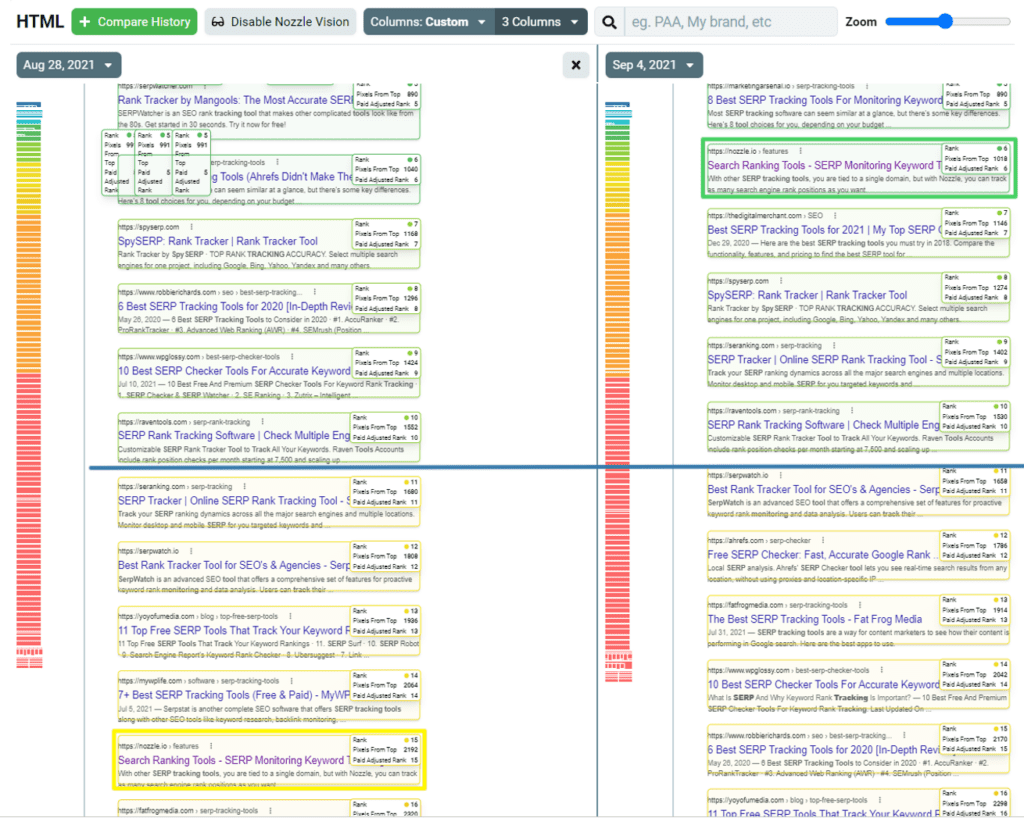The Wayback Machine is a useful tool for analyzing the history of a site for any reason.
But it’s definitely overlooked when it comes to SEO, particularly on-site optimization.
When used in combination with a solid rank tracker, the Wayback Machine’s ability to display past versions of webpages is invaluable. It can be used to identify the on-site causes of past rank changes and inform your SEO strategy.
And the Wayback Machine’s “Changes” tool makes it so much easier to match a change in rankings with a change on a site.
Why “Changes” + Rank Tracker for SEO
“Changes” paired with a rank tracker will offer you important data. A rank tracker like Nozzle will give you a specific URL to investigate, its current and previous rank, and related SERP data. The Wayback Machine’s “Changes” tool will show you the dates and extent of alterations at that URL in addition to displaying a past version of the webpage.
Plus, if you use “Changes” in conjunction with Nozzle Vision, you’ll have access to history comparisons of both web pages and their corresponding SERPs.
Webpage history will indicate modifications in copy, header and footer, images, sites linked to, and other layout features. SERP history will reveal changes in the structure and rank of a URL’s listing, such as included links, listing type, whether Google is displaying the meta description or an excerpt from the text of the webpage, and other important metrics.
Once you have all this data and you’ve matched a positive ranking effect with a probable site change cause, you can begin implementing similar modifications on other web pages to try and achieve similar results.
And keep in mind that you can use these tools to analyze the causes of both your own and your competitors’ rank changes.
How I Used “Changes” with a Rank Tracker
Using Nozzle, I found a historical rank change that I was curious about.
The data showed one of our pages ranking significantly higher than before for a specific keyword. I’ve highlighted the range that caught my attention. This was a movement from a rank of 15 (page 2 of the SERP) to a rank of 6 (page 1, where sites actually get clicked on).

We hadn’t recorded any changes to our webpage in this date range. (You know, sometimes things slip through the cracks… 🤷)
I decided to investigate using the Wayback Machine’s “Changes” tool and came to a calendar showing snapshots of our site. A snapshot of our page was taken on September 4—within my date range of interest—and the green color indicated that moderate changes had been recorded.

Selecting the snapshots I wanted and clicking the “Compare” button, I contrasted that snapshot with the previous one and discovered an important difference. The section highlighted in yellow had been deleted prior to the September 4th snapshot.

And that means it had been removed before the September 4th rank change as well. Deleting this outdated section and thereby narrowing the focus of the page likely played a role in boosting its rank. Changing our site had a trackable impact on our rankings, and we were even able to investigate it months later.
And if I use Nozzle Vision, I can see the rank change in the SERP history too. The structure of our listing hasn’t changed, but it jumped up a page. I’ve drawn a line where the page break would be.

You can start with your rank tracker’s data and look for corresponding site changes on the Wayback Machine like I did, or you can try the other way around.
Post-Analysis Actions
Now that I’ve matched a webpage change with a rank change, I can apply similar changes to other web pages, like deleting content that is outdated or that takes away from the main focus of the page.
If this scenario had been a drop in rankings, my analysis with the “Changes” tool could have prompted me to add the deleted content back in or at least revisit the page’s content to make some decisions on updating it.
This kind of analysis and implementation is ideal for streamlining your own optimizations or replicating a successful competitor’s strategy.
“Changes” Caveats
The utility of the Wayback Machine and its “Changes” tool is pretty cool, but it’s important to remember that it serves a limited purpose. It won’t keep track of data like acquired links, social posts, or ad campaigns, so it’s critical to keep a record of all your SEO efforts and note all possible causes for ranking changes.
And we all know that correlation doesn’t mean causation. But it sure helps to get an idea.
Also, keep in mind that the “Changes” tool can be a bit finicky. I’ve gotten several errors while using it, but refreshing the page usually fixes the problem.
But overall, the Wayback Machine’s “Changes” tool is an overlooked option for monitoring competitors’ sites whose history you haven’t been tracking and is a nice fallback if you’ve forgotten to record a site change.
